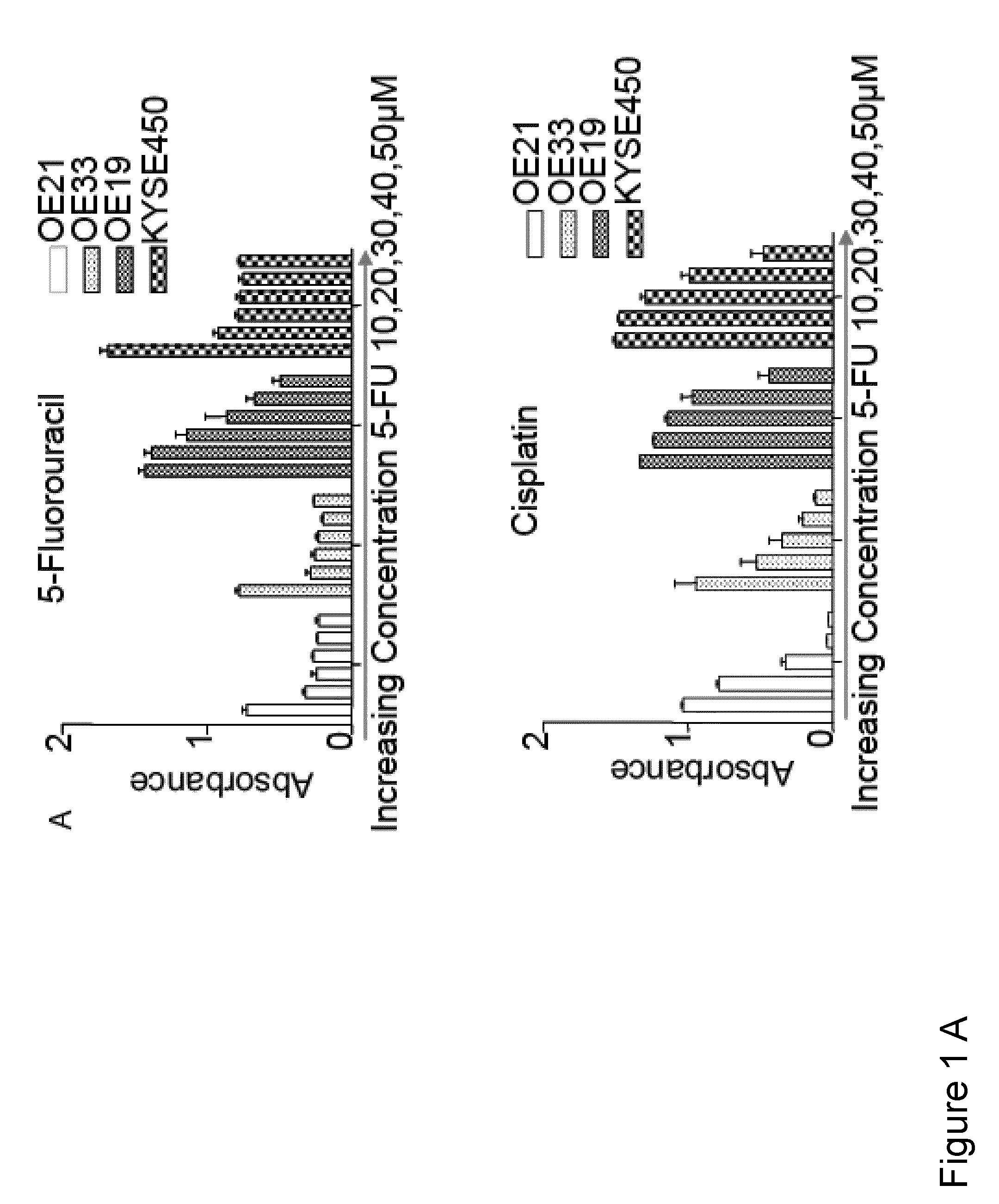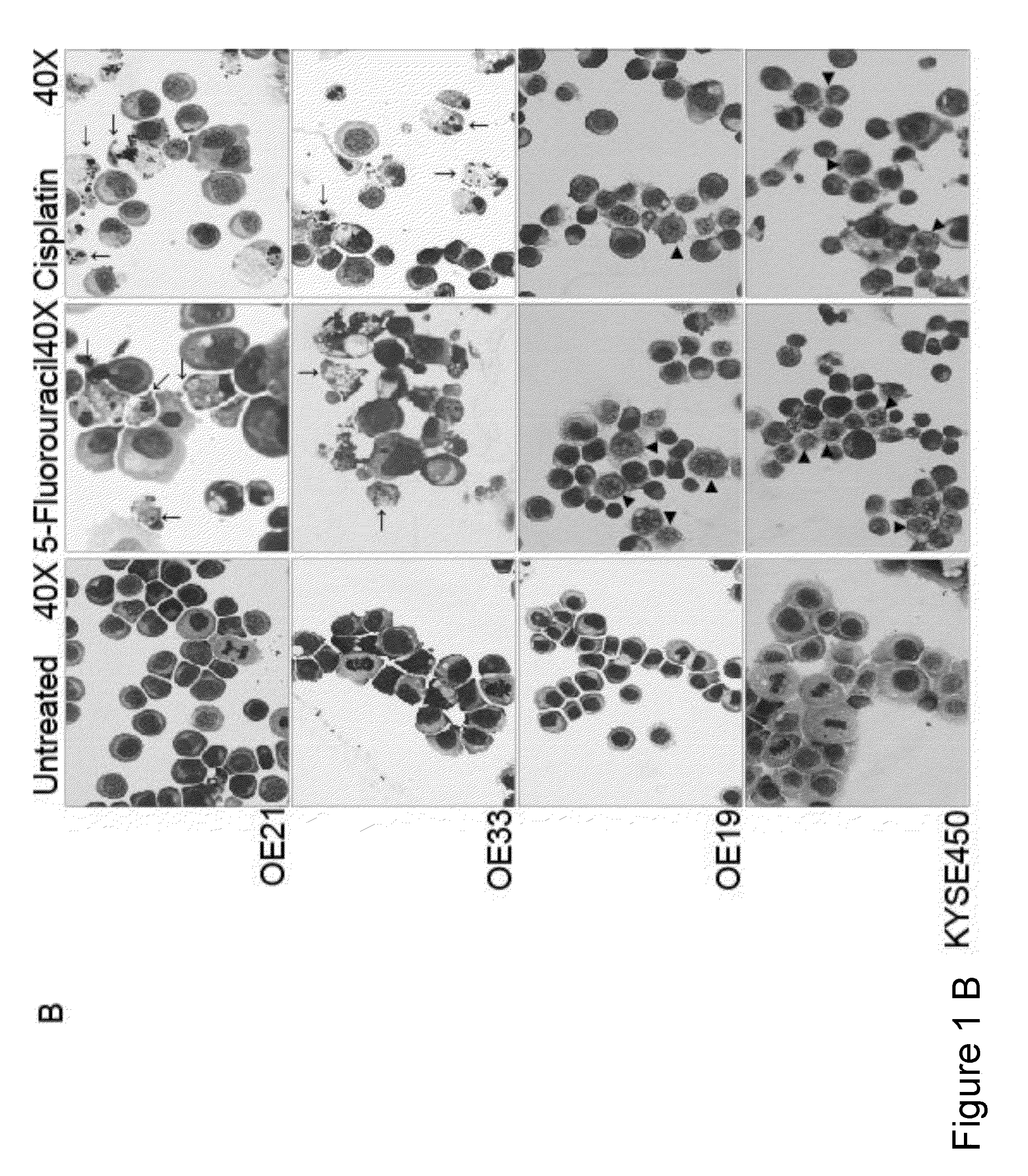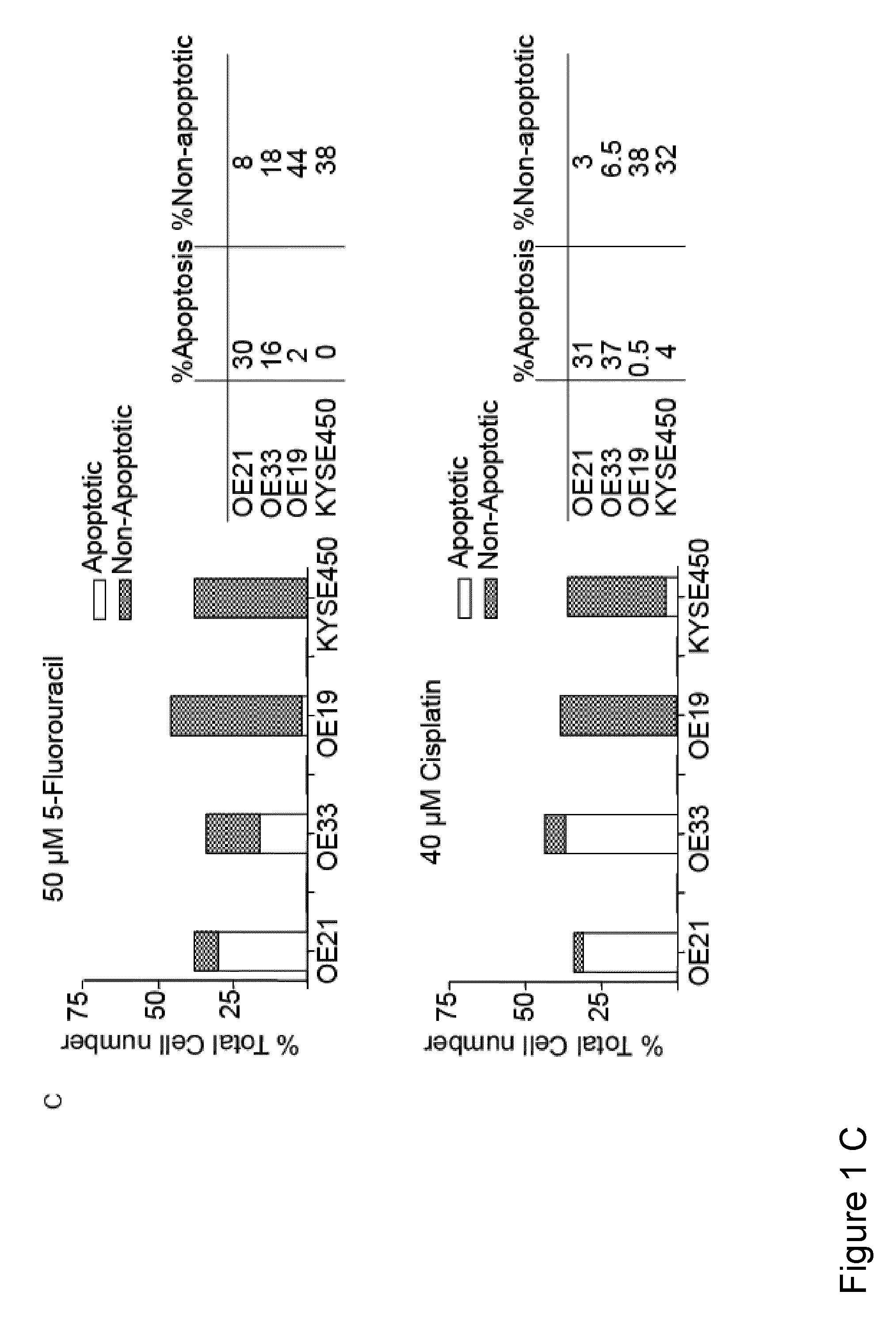Method for the treatment of cancer
a cancer and cancer technology, applied in the field of cancer treatment, can solve the problems of recurrence of cancer and tumour dormancy, and achieve the effects of preventing recovery, accelerating cell survival to autophagic programmed cell death, and inhibiting continued growth
- Summary
- Abstract
- Description
- Claims
- Application Information
AI Technical Summary
Benefits of technology
Problems solved by technology
Method used
Image
Examples
Embodiment Construction
Methods
Cell Lines and Culture Conditions
[0068]Established human esophageal cell lines OE19, OE21 and OE33 were obtained from the European Collection of Cell Cultures. KYSE450 were from Die Deutsche Managementsystem Zertifizierungsgesellschaft mbH (DSMZ). All cell lines were maintained in RPMI 1640 medium, 1% penicillin / streptomycin and 10% (v / v) foetal calf serum (Gibco, UK) and grown at 37° C., 5% CO2.
Cell Growth / Viability
[0069]Cell growth / viability was assessed using the Real-Time Cell analyzer. Cells were seeded at 2.5×104 cells / cm2, in a 96-well plate and treated for ˜80 hours. To assess recovery, at 80 hours post treatment all drugs were removed, culture medium was replaced and cells were cultured for an additional 85 hours, to monitor their ability to recover. Viable cells remain adhered to the plate and the relative change in electrical impedance is measured to represent cell status. The cell index (CI) is a relative value, representing the impedance change divided by a backg...
PUM
| Property | Measurement | Unit |
|---|---|---|
| diameter | aaaaa | aaaaa |
| volume | aaaaa | aaaaa |
| volumes | aaaaa | aaaaa |
Abstract
Description
Claims
Application Information
 Login to View More
Login to View More - R&D
- Intellectual Property
- Life Sciences
- Materials
- Tech Scout
- Unparalleled Data Quality
- Higher Quality Content
- 60% Fewer Hallucinations
Browse by: Latest US Patents, China's latest patents, Technical Efficacy Thesaurus, Application Domain, Technology Topic, Popular Technical Reports.
© 2025 PatSnap. All rights reserved.Legal|Privacy policy|Modern Slavery Act Transparency Statement|Sitemap|About US| Contact US: help@patsnap.com



